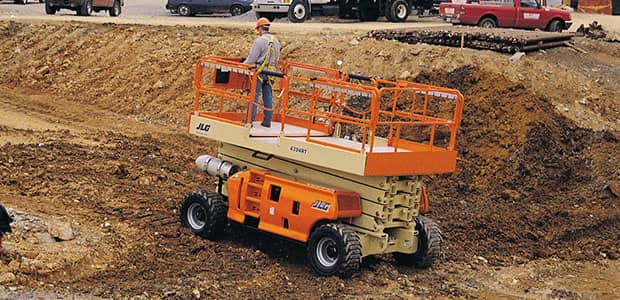An Extensive Method to Enhancing Efficiency Through Strategic Lift Repair Work Methods
A organized and calculated method to raise repair service and upkeep is necessary to make best use of efficiency and lessen downtime. By dealing with common lift problems, implementing positive maintenance measures, and establishing targeted repair plans, centers can maximize their lift systems to run at peak efficiency levels.
Significance of Lift Performance Optimization
Comprehending the importance of enhancing lift performance is crucial for guaranteeing reliable and dependable vertical transport systems in various buildings and structures. Lifts are important components of modern framework, providing upright wheelchair for occupants and goods within structures of differing heights. By optimizing lift performance, structure owners and facility supervisors can boost individual experience, enhance power performance, and rise overall functional efficiency.
Effective lift performance optimization includes various aspects, consisting of speed, capacity, energy safety, maintenance, and usage demands. Effectively optimized lifts can minimize wait times for customers, specifically in high-traffic buildings, resulting in boosted fulfillment and performance. In addition, optimized lifts contribute to energy financial savings by making use of advanced control systems and technologies that minimize power consumption without jeopardizing performance.

Identifying Common Lift Issues
Recognizing typical lift concerns is vital for keeping the operational effectiveness and safety and security of vertical transport systems in buildings. Recognizing these problems can aid avoid breakdowns, lower downtime, and extend the life expectancy of the lift tools. One usual problem that building managers and upkeep groups often come across is uneven or jerky movements during operation. This problem can be a sign of troubles with the lift's electric motor, control system, or even the alignment of the lift cars and truck.
Another prevalent lift issue is unusual noises emanating from the lift shaft or machinery room. These noises can range from grinding or scraping audios to loud clunking sounds, all of which might signify underlying mechanical issues that require instant attention. In addition, regular door malfunctions, such as doors closed or closing properly, can disrupt the smooth circulation of guests and present security dangers.
Executing Proactive Upkeep Actions
To enhance the performance and longevity of lift systems, aggressive upkeep procedures play a critical function in making sure operational integrity and safety and security. lift servicing companies. Implementing aggressive maintenance involves methodically examining, servicing, and fixing elements before they fail, hence protecting against expensive downtime and potential safety and security dangers. Frequently scheduled examinations can assist recognize minor issues before they escalate into significant issues, inevitably prolonging the lifespan of lift systems
One secret facet of aggressive upkeep is producing a detailed upkeep schedule based on supplier suggestions and sector best methods. This schedule ought to lay useful content out tasks such as lubrication, positioning checks, and part replacements at defined periods. Additionally, applying problem tracking methods, such as resonance analysis and thermal imaging, can aid detect early indicators of wear or malfunction.
Additionally, training upkeep team on proper assessment techniques and precautionary upkeep treatments is important for the effective application of aggressive maintenance steps. By promoting a society of aggressive upkeep within an organization, lift systems can operate at peak performance levels, lessening disturbances and go to this website ensuring the safety of individuals.
Establishing Targeted Repair Service Plans
Upon evaluating the maintenance records and performance information, the design team can establish targeted repair work plans to enhance and deal with particular issues lift system capability. These fixing strategies are tailored to the identified troubles, making sure that resources are focused on resolving critical concerns effectively. By prioritizing repairs based upon their influence on performance and safety, the targeted fixing plans help decrease downtime and maintenance prices while making the most of the lift system's reliability.
Establishing these plans entails a detailed analysis of the lift system parts, consisting of motors, cords, brakes, and control systems. Through this thorough evaluation, the design team can establish the root creates of any malfunctions or destruction in efficiency. This info is then made use of to create a roadmap for the fixing process, laying out the needed actions, timeline, and resources called for to deal with each concern efficiently.
In addition, targeted repair strategies might include preventative procedures to boost the lift system's longevity and efficiency. By proactively addressing prospective problems prior to they escalate, these plans add to the overall effectiveness and security of the lift system.
Making Use Of Data-Driven Insights
Utilizing the power of data-driven insights is essential in optimizing lift system performance and upkeep performance. These anticipating upkeep approaches assist avoid unanticipated malfunctions, minimize downtime, and extend the life expectancy of lift systems.

Final Thought
To conclude, optimizing lift performance is essential for making sure effectiveness and safety in structures. By determining usual lift problems, applying proactive maintenance procedures, establishing targeted repair service strategies, and using data-driven insights, organizations can boost performance and lessen downtime. It is necessary to take a detailed method to lift repair service techniques to make the most of functional effectiveness and guarantee the long life of lift systems.
By addressing typical lift concerns, applying proactive upkeep measures, and developing targeted repair strategies, centers can optimize their lift systems to operate at peak efficiency levels.Another widespread lift problem is strange noises read the full info here emanating from the lift shaft or machinery area.Upon evaluating the upkeep documents and efficiency data, the design group can develop targeted repair work strategies to resolve certain problems and optimize lift system performance. By prioritizing fixings based on their effect on performance and safety and security, the targeted repair work strategies assist minimize downtime and upkeep expenses while making best use of the lift system's dependability.
It is essential to take a comprehensive technique to lift repair service techniques to take full advantage of operational performance and guarantee the long life of lift systems.